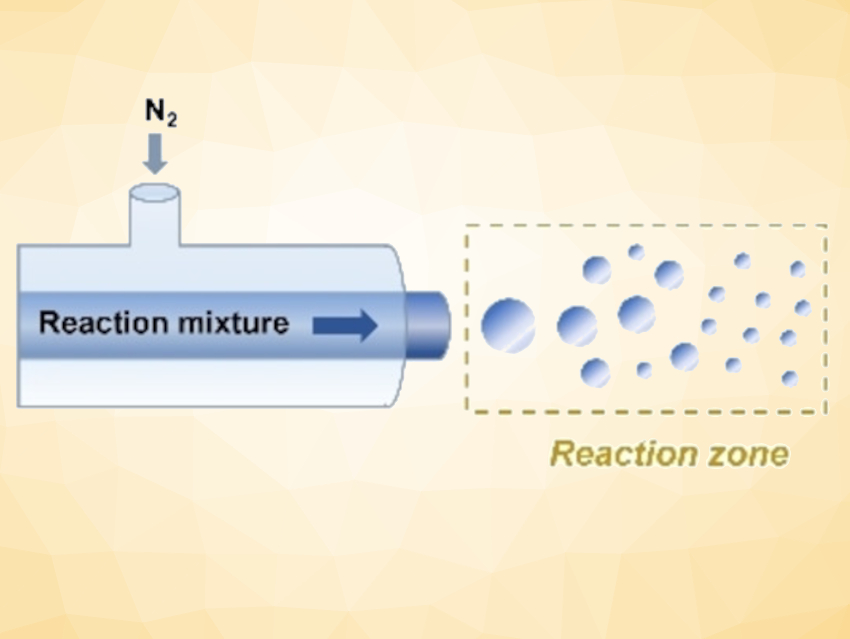Mass spectrometry (MS) can be a tool for chemical synthesis—in addition to its more common use in analysis. Microdroplets generated by electrospray ionization can function as microscale reactors. They tend to accelerate reactions by several orders of magnitude compared with a bulk solution. The rate acceleration varies inversely with droplet size, pointing to a surface phenomenon, but the mechanism has been uncertain.
R. Graham Cooks, Purdue University, West Lafayette, IN, USA, and colleagues have measured the rate constants k of various organic reactions in microvolumes and in bulk, with the rate acceleration factors given by kinterface/kbulk—i.e., the ratio of the rate constant of the microscale reaction relative to that of the corresponding bulk reaction. The team performed eight reactions of various types (substitution, condensation, addition, and elimination) in three types of microreactors (microdroplets, thin films, and sealed tubes), as well as in bulk solutions.
The team found that all bimolecular reactions in reactors with gas/solution interfaces are accelerated. Microdroplets provided higher accelerations than thin films due to their higher surface-to-volume ratio. According to the researchers, partial solvation of reagents at the phase boundary explains these results. Solvation decreases reaction rates, but is weaker at the interface than in the bulk—thus, kinterface/kbulk can be large. Unimolecular elimination reactions showed negligible acceleration. The similar solvation energies for the reactant and the transition state explain the lack of acceleration in these cases.
- Reaction Acceleration Promoted by Partial Solvation at the Gas/Solution Interface,
Lingqi Qiu, Zhenwei Wei, Honggang Nie, R. Graham Cooks,
ChemPlusChem 2021.
https://doi.org/10.1002/cplu.202100373




